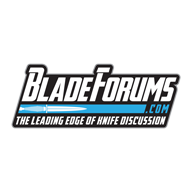- Joined
- Dec 11, 2000
- Messages
- 1,104
The Reeder grinder has features on their rotary platen to allow for a rigid backing platen to be fitted to back the rubber belt. They sell a hardened 440C platen for this, but it is quite expensive for someone who is only a hobby maker. I am thinking about making a pyroceram faced platen, maybe on an aluminum backing for heat dissipation and was wondering if this might be a bad idea? I have made a couple of rigid ceramic platens for my Coote with JB Weld and a screwed on step, and was thinking of something similar, just much shorter.
What do folk think?
I don't have an easy set up for heat treating platen size material, so hard steel is a lot more difficult to arrange than the ceramic, which I already have.
I know Moen Works do a very fancy rotary platen with backing and cooler, but haven't seen much else mentioned.
This video shows how Reeder set theirs up. 11:20 I haven't got a good bracket yet, so still very much at drawing board stage.
Thanks
Chris
What do folk think?
I don't have an easy set up for heat treating platen size material, so hard steel is a lot more difficult to arrange than the ceramic, which I already have.
I know Moen Works do a very fancy rotary platen with backing and cooler, but haven't seen much else mentioned.
This video shows how Reeder set theirs up. 11:20 I haven't got a good bracket yet, so still very much at drawing board stage.
Thanks
Chris



